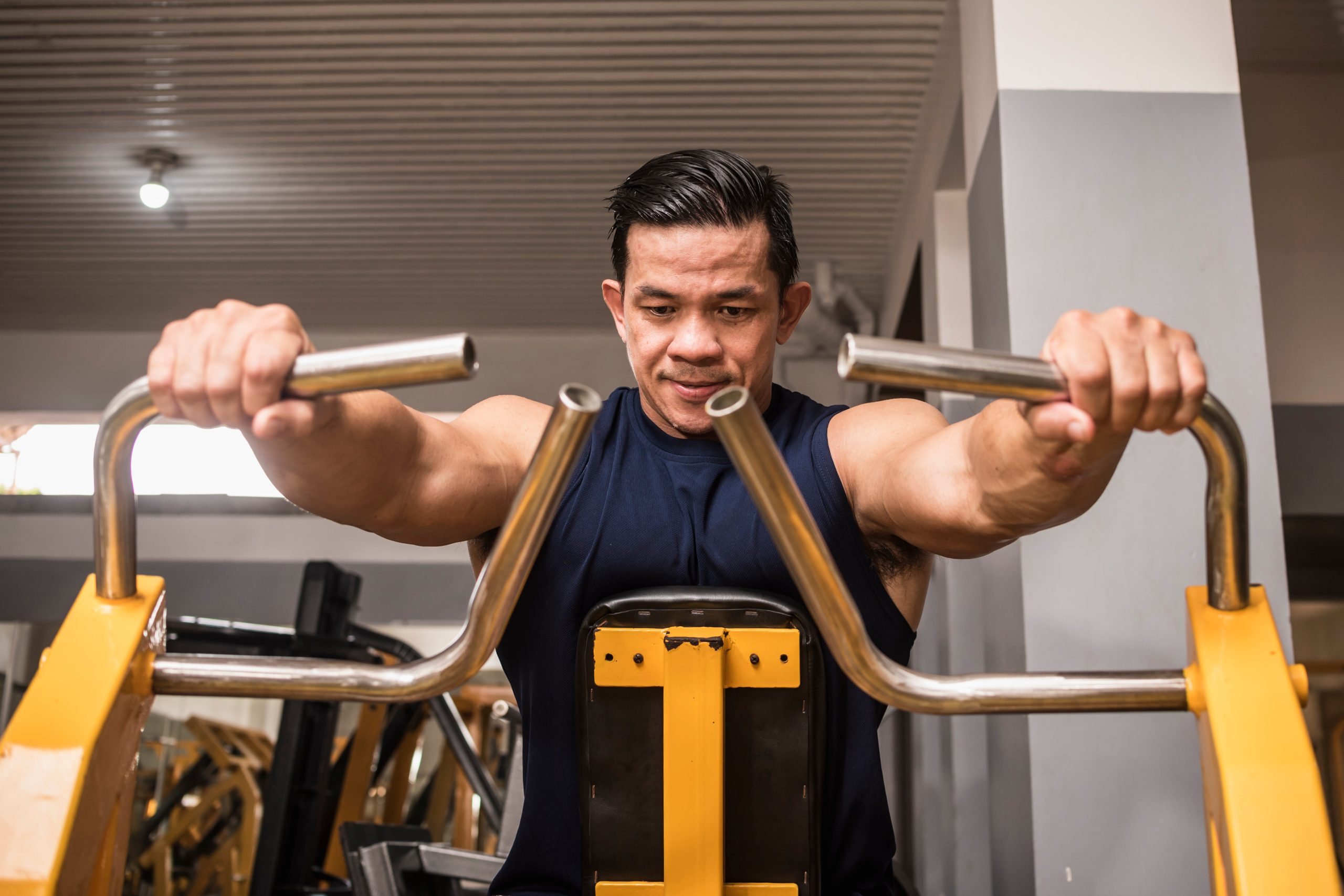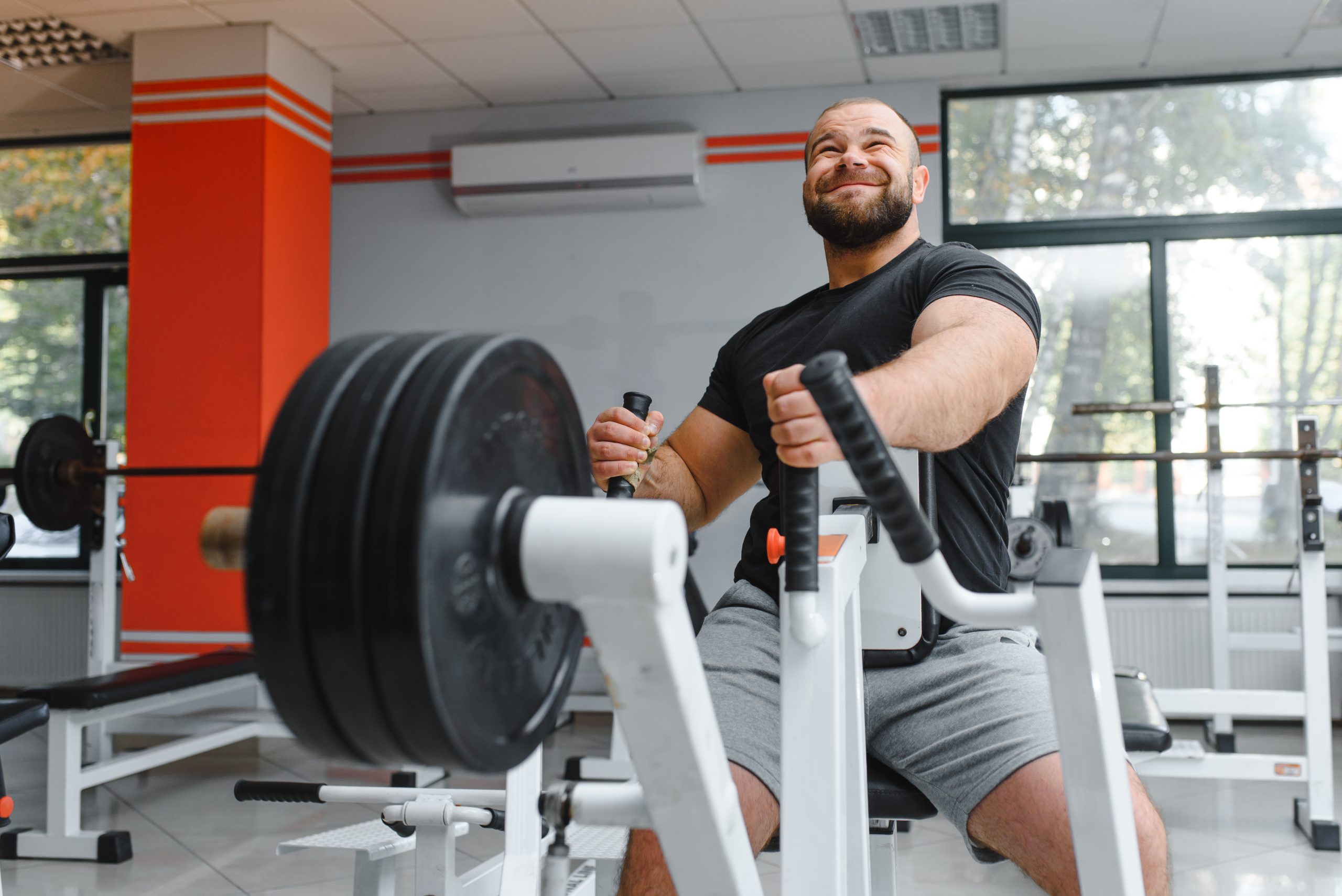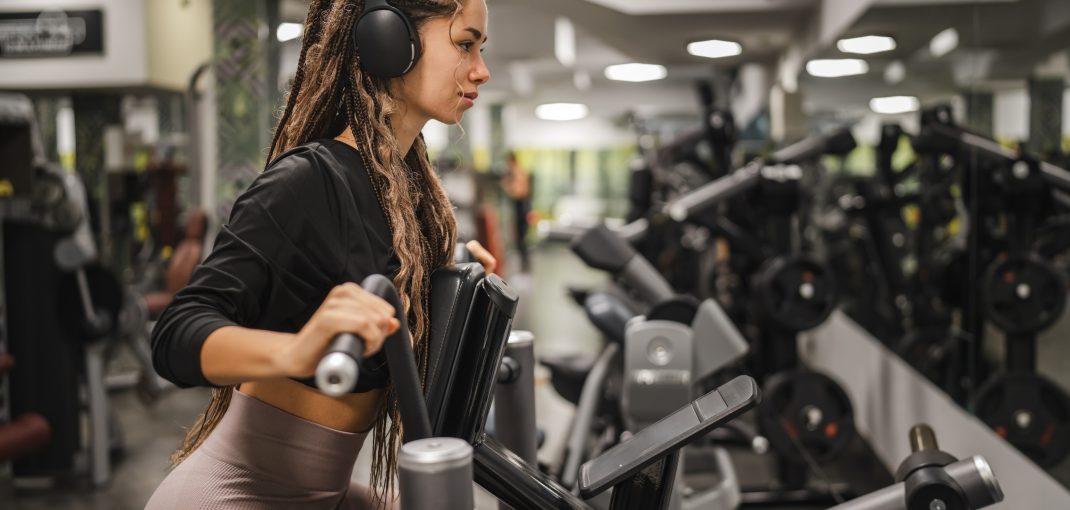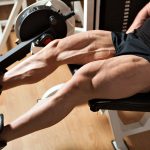The machine seated row is one of the most effective exercises for building a strong and well-defined back. This is one of those staple exercises that is great for beginners as well as the experienced lifter who is looking to ad muscle mass.
Before we dive in, one thing to note. There are hundreds of different seated row machines. These machines all have different options for grips/hand variations, adjustable seat height and adjustable pad settings. Some are plate loaded and others are pin loaded with cables. Your gym will most likely have some sort of seated row machine, but try to pay attention to what one works best for your body!
What Are Machine Seated Rows?
Machine seated rows are a resistance exercise that primarily targets the muscles of the upper and middle back. Unlike free-weight rows, this exercise is performed using a machine, which provides a controlled range of motion. This stability makes it an excellent choice for beginners or those recovering from injuries.
What Does Machine Seated Row Work?
The machine seated row is a compound exercise that engages multiple muscle groups, including:
- Latissimus dorsi (lats) – The large muscles on the sides of your back, responsible for width and overall back strength.
- Rhomboids – Located between your shoulder blades, these muscles help with scapular retraction.
- Trapezius – The upper, middle, and lower traps contribute to shoulder stability and posture.
- Posterior deltoids – The rear part of the shoulders, aiding in pulling movements.
- Biceps brachii – The arms assist in the pulling motion but should not dominate the movement.
- Erector spinae – The muscles along your spine that help maintain posture.
Machine Seated Row Tutorial
How to Perform Machine Seated Rows with Proper Form
Proper form is crucial for maximizing muscle activation while avoiding injuries. Follow these step-by-step instructions for executing the exercise correctly.
Step 1: Adjust the Machine Properly
Set the seat height so that the handles are at mid-chest level when you’re seated. Adjust the chest pad to allow a slight forward lean while keeping your spine neutral. Choose an appropriate weight that allows you to perform the movement with good form.
Step 2: Position Yourself Correctly
Sit down and place your feet flat on the platform or footrests. Keep your back straight and chest up. Grab the handles with an overhand or neutral grip (depending on the machine).
Step 3: Execute the Row
Pull the handles towards your torso by driving your elbows back. Squeeze your shoulder blades together at the peak of the movement. Avoid using momentum or excessive swinging.
Step 4: Keep Chest Pressed Against The Pad
Avoid leaning back and taking your chest off the pad. Keep your chest up against the pad to make sure you are pulling the weight with the correct targeted muscles. **Leaning back can be useful for other variations of rows such as cable rows and depending on the angle.** Just make sure you are pulling with your back, not your biceps or other muscles and you will be good!
Step 5: Control the Eccentric Phase
Slowly extend your arms back to the starting position, maintaining control of the movement. Keep tension on your back muscles rather than letting the weight drop suddenly.
Step 6: Repeat
Perform 8-12 repetitions for muscle growth or 12-15 reps for endurance, depending on your training goal.

Benefits of Machine Seated Rows
1. Builds a Stronger and More Defined Back
Machine seated rows effectively target the back muscles, helping to build thickness and definition. A strong back enhances overall strength and performance in other compound movements like deadlifts, squats, and overhead presses.
2. Reduces the Risk of Injury
By strengthening the back muscles, seated rows contribute to better posture and spinal stability, reducing the risk of lower back pain and injuries related to poor posture.
3. Improves Posture
A strong back counteracts the negative effects of prolonged sitting and slouching, which can lead to postural imbalances. Strengthening the rhomboids and traps helps pull the shoulders back, preventing rounded shoulders.
4. Provides a Controlled Range of Motion
Unlike barbell or dumbbell rows, the machine row offers a fixed movement path, reducing the risk of improper form and injury. This makes it ideal for beginners and those recovering from injuries.
5. Enhances Grip Strength
Holding and pulling the handles against resistance strengthens the forearms and grip, which can carry over to other exercises like deadlifts, pull-ups, and kettlebell swings.
6. Can Be Used for Both Strength and Endurance
By adjusting the weight and rep range, machine rows can be tailored to different training goals, whether it’s building muscle mass, increasing endurance, or improving muscular strength.
This video below goes through some of the common mistakes as well as a few hand variations towards the end!
Common Mistakes and How to Fix Them
Even though machine seated rows provide stability, it’s important to make sure you focus on form before anything else. We not only don’t want you to get hurt, we want you to see results!
1. Using Too Much Weight
Lifting excessive weight often leads to improper form, relying on momentum rather than muscle engagement. Instead: Use a manageable weight that allows you to maintain control throughout the movement. Focus on contracting your back muscles rather than jerking the weight.
2. Rounding the Back
Slouching forward reduces back activation and increases the risk of lower back strain. Instead: Keep your chest up and shoulders retracted. Engage your core to maintain a neutral spine.
3. Flaring the Elbows
Letting your elbows drift too far outward shifts tension away from the lats and can lead to shoulder discomfort. Instead: Keep your elbows close to your torso and pull in a straight line. **Flaring your elbows can be used in other variations such as cable rows to target different muscles when switching up your routine, but it’s best practice to keep the elbows tucked in close for machine seated rows specifically.
4. Pulling with the Arms Instead of the Back
Many lifters rely too much on their biceps rather than engaging the back. Instead: Initiate the movement by retracting the shoulder blades before bending the elbows. Imagine pulling with your elbows rather than your hands.
5. Not Controlling the Eccentric Phase
Letting the weight return too quickly reduces muscle engagement. Instead: Lower the weight in a slow, controlled manner to maximize tension on the back muscles.
Machine Seated Row Variations
To keep your training fresh and target muscles from different angles, try these variations:
1. Wide-Grip Seated Row
Using a wider grip emphasizes the rear delts and upper traps. Pull the handles towards your upper chest instead of the lower torso.
2. Close-Grip Seated Row
A closer grip emphasizes the lats more, promoting back thickness. Keep elbows tight to your torso for maximum engagement.
3. Single-Arm Machine Seated Row
Performing the row one arm at a time improves muscle imbalances. Focus on mind-muscle connection by fully stretching and contracting the back.

4. Underhand Grip Seated Row
Using a supinated grip (palms up) involves more biceps activation. Keep a strict form to prevent excessive arm engagement.
How to Incorporate Machine Seated Rows into Your Routine
For Strength
4-5 sets of 5-8 reps. Heavy weight with longer rest periods (2-3 minutes).
For Hypertrophy (Muscle Growth)
3-4 sets of 8-12 reps. Moderate weight with 45-60 seconds of rest.
For Endurance and Conditioning
2-3 sets of 12-15 reps. Lighter weight with minimal rest (30-45 seconds).
Pairing Suggestions: Combine with pull-ups or lat pulldowns for a complete back workout. Pair with face pulls to strengthen the rear delts and traps. Include core exercises like planks or hanging leg raises to enhance stability.
Final Thoughts
Machine seated rows are an excellent addition to any workout routine, whether you’re focusing on strength, muscle growth, or endurance.
If you’re new to the exercise, start with a lighter weight and gradually increase resistance as you build strength and confidence. Consistency, proper technique, and progressive overload are key to seeing significant improvements in your back development. Now, it’s time to hit the gym and start incorporating machine seated rows into your workout routine! Stay strong and train smart. 💪








